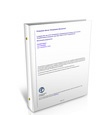Change Configuration and Release Performance Study
Many IT organizations are turning to industry recognized best practices frameworks such as ITIL, in order to standardize key IT service management processes. However, most organizations implement only a small subset of recommended practices based on the needs of their organization.
We analyzed 57 industry best practices to determine their impact on 15 key performance measures. This study provides hard evidence about 7 key change, configuration and release performance drivers that best predict top levels of performance across 341 IT organizations studied.
We analyzed 57 industry best practices to determine their impact on 15 key performance measures. This study provides hard evidence about 7 key change, configuration and release performance drivers
Change Configuration and Release Performance Study that best predict top levels of performance across 341 IT organizations studied.
A summary of key findings in this study include:
- Release trumps change – rigorous release build, testing and rollback practices have broad impact on individual performance measures and overall performance. Change tracking and change oversight practices are necessary but not sufficient to achieve performance improvement on their own.
- Process discipline matters – there are no change, configuration and release silver bullets. Building a process-focused culture and monitoring and responding to process exceptions predicts top-levels of performance more than the many of the industry recognized best practices in these areas.
- Standardized configuration works – practices related to using only specific production system configurations, providing IT personnel about the approved and current configuration, and detecting configuration changes – are primary predictors of a stable and secure computing environment.
- Controlled production access improves performance – having defined roles and responsibilities, clear separation of duties, and reduced access to production environment together predict higher levels of performance.
- CMDB enables powerful practices – the use of a Configuration Management Data Base is not yet widespread, but CMDB enabled change linkage practices predict higher levels of performance.
Study highlights:
- This comprehensive study offers detailed analysis of 7 key performance drivers that should be implemented to achieve higher levels of performance.
- It links performance drivers to specific performance measures in order to help IT organizations identify process changes that can improve specific measures.
- It details the performance improvement potential for top, medium and low performers in the study.
- Top-performers auto-detect an average of 91% of security breaches, which is 40% higher than medium performers and 51% higher than low performers.
Free White Paper

Related Benchmark


